Best
Intermediate Flute
Quantz Flute GORGEOUS, WELL-BALANCED AND EFFICIENT
-
Overall: With French-Pointed Arms, Which Provide A Better Seal With Improved Durability
-
Best Feature: Comes with a faux leather-bound wooden case, case cover, cleaning rod and cloth
-
TedScore™: 8/10
Best
Overall Beginner
Flute
SUPERB INTONATION
-
Overall: Silver Plated Throughout Which Offers Great
Sound Quality For A Beginner Instrument -
Best Feature: Very durable and portable
-
TedScore™: 9/10
Best
Student Flute
-
Overall: Has A Nickel And Silver Alloy Body With A Stable And Robust Build
-
Best Feature: Comes as a pack including a wooden case with a cover, cleaning rod and a cleaning cloth
-
TedScore™: 8/10
If you’ve ever struggled with a flute key that won’t move during a performance, don’t worry! I’ll share some tips on how to stop flute keys from sticking so your music can flow smoothly.
We’ve all been there, and as a fellow flute player, I understand the frustration.
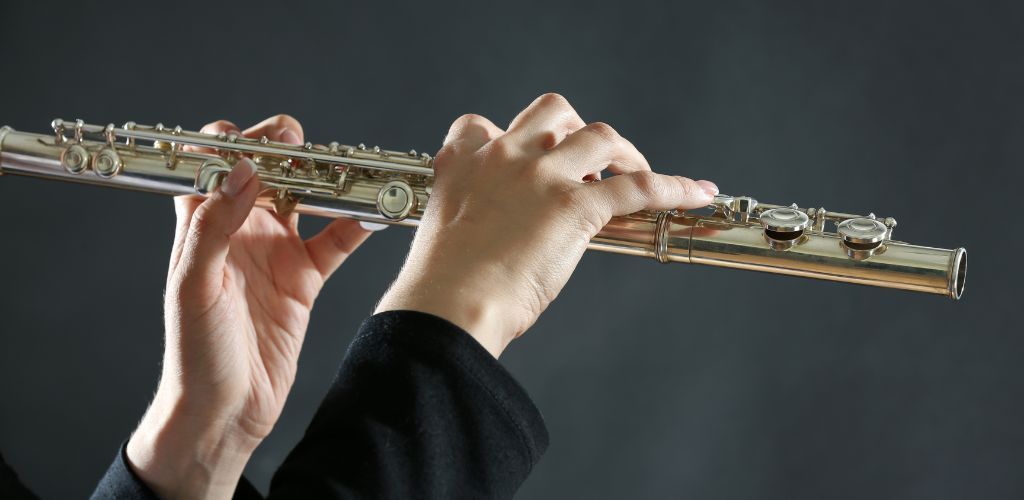
Taking preventive measures can save you a lot of hassle down the line. Keeping your flute’s keys from sticking is part and parcel of the joyous music-making adventure.
Now, don’t let a sticky situation dampen your spirits! Together, we’ll explore the dos and don’ts to keep your woodwind instrument in tip-top shape.
Keep reading, and make those sticky keys a tale of the past!
Practical Solutions for Sticky Flute Keys
In my experience, dealing with sticky keys quickly can spare you a lot of frustration.
Allow me to guide you through some hands-on techniques to keep your flute’s notes crisp.
Temporary Fixes on the Go
I often rely on a piece of cigarette paper or rolling paper as my first port of call.
Here’s a nifty trick: place the paper between the sticky pad and the tone hole, press the key lightly, and release. Tada! It usually works like magic to absorb any moisture causing the stickiness.
If you don’t have paper on hand, a dash of lighter fluid applied sparingly can work wonders.
Remember, I only suggest one tiny drop! It’s good for dissolving the gunk, but go steady—lighter fluid isn’t a friend to your instrument’s long-term health.
Adjustment and Repair
Sometimes, the culprit is a loose screw or rod.
Tighten things up with a screwdriver, but do just what is necessary. Twisting these small metal parts requires a soft touch, or you might find the flutter in your flute’s trill keys turning to a flop.
Occasionally, the springs under the keys, those unsung heroes, can lose their tension. You’ll need to readjust the spring or, better yet, replace it.
And to avoid future woes, don’t underestimate the power of an excellent clean – after each session, please!
When to Seek Professional Help
If you’ve tried your hand and the stickiness persists in your key’s sound, it’s time to involve a technician. They have eagle eyes for spotting those fiendish issues that we mere mortals miss.
Don’t wait until the sticky pad becomes a sticky situation.
Regular check-ins with a professional can keep those delicate parts, like the small rings and posts, in top form. Think of it as a spa for your flute—because she deserves it, doesn’t she?

Understanding Flute Maintenance
Inherently, my flute is a companion that sings with me, but only when it’s cared for with love and attentiveness.
Sticking keys on a flute can be quite frustrating for musicians, as it can disrupt the smoothness of playing.
The Role of Pads and Keys in Flute Functionality

Keys are my gateway to music; they switch to different notes. Underneath them, the pads serve a crucial role by sealing the tone holes, which allows me to control the airflow and craft each note impeccably.
With a firm and airtight seal, my flute would retain its richness, resulting in squeaks rather than the sweet sound of music.
Common Causes of Sticky Keys
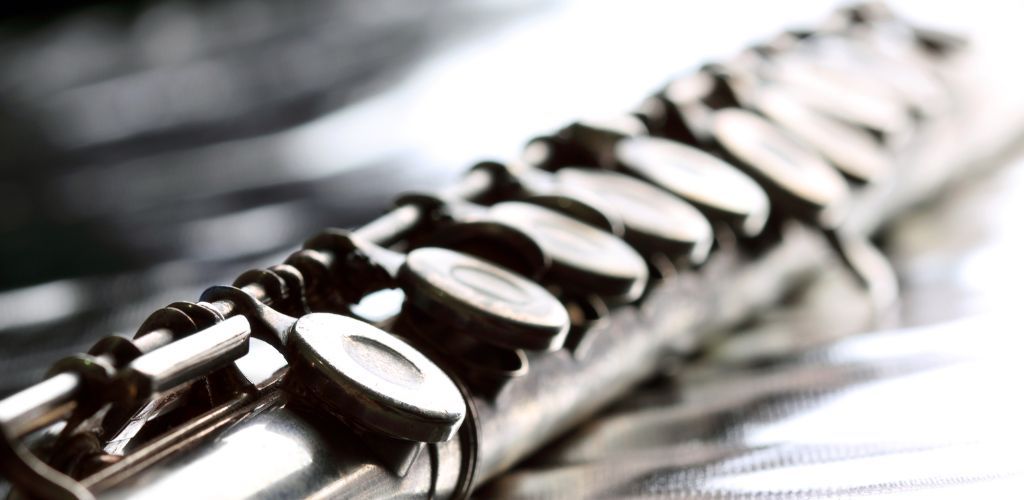
Sticky keys can be a real pain! It’s often caused by humidity, dirt, or skin oils, which make the pads stick to the tone holes.
Even a tiny bit of stickiness can stop the pad from lifting, affecting the clarity of my notes. These sticky issues can turn my peaceful practice into a frustrating situation!
Routine Cleaning and Care Techniques
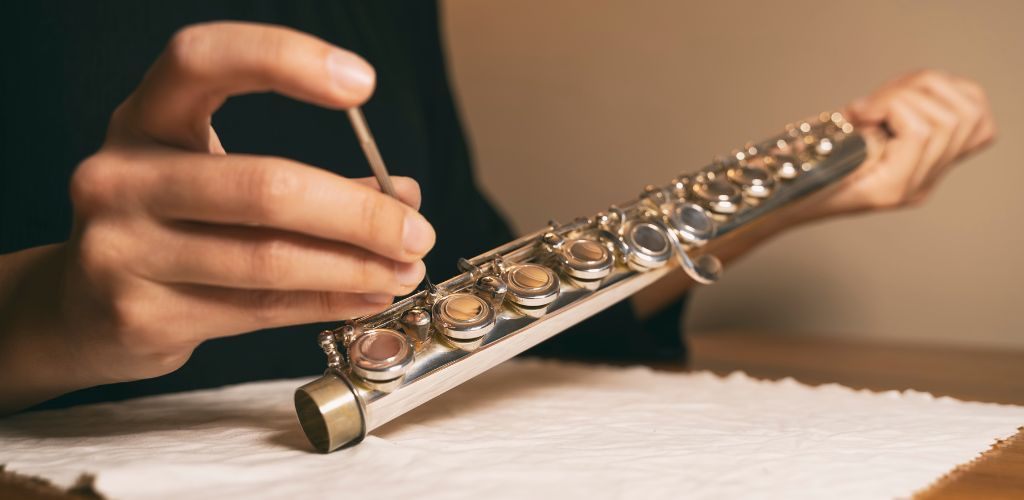
I’ve learned that keeping my flute clean is essential. After playing, I use a cleaning rod and soft cloth to remove moisture from the inside.
For sticky pads, I use pad skin paper or cigarette papers to absorb moisture and a flute stand to keep it safe. Visiting a professional technician occasionally helps prevent issues, and these simple steps keep my music playing smoothly.
Brands Recommended
YAMAHA YFL212
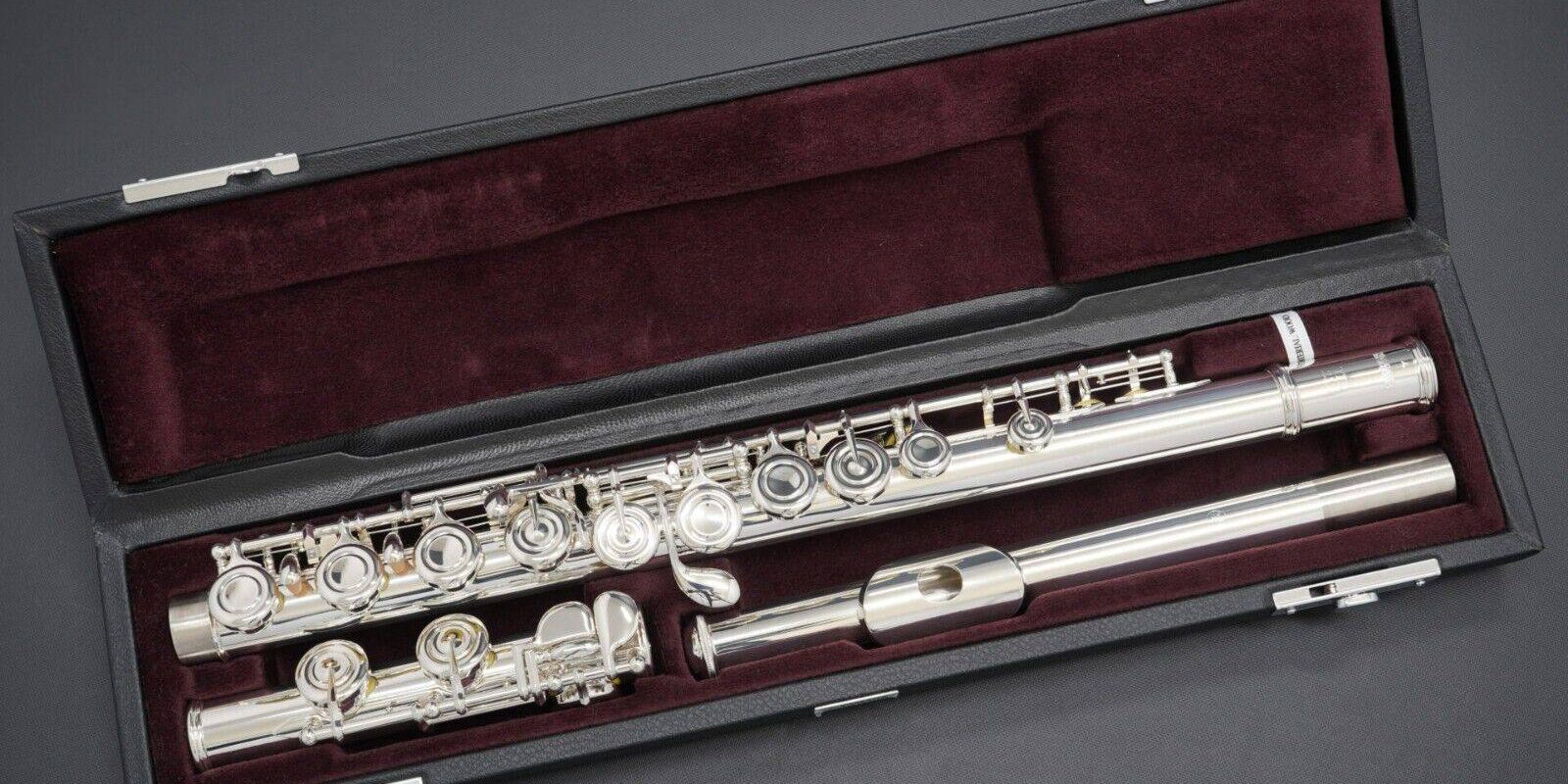
The YAMAHA YFL212 flute features a nickel silver body with a silver-plated finish, providing a bright, clear tone and excellent durability.
Its ergonomic key design and easy-to-play E mechanism make it an ideal choice for beginner flutists seeking comfort and reliable performance.
Yamaha YFL212 Student Model Flute

DESIGNED FOR: beginner flute players
FEATURES: Has a responsive sound with superb intonation
OTHER INFO: The flute's body is built with nickel silver for durability, producing a clear, rich tone
Yamaha YFL212 Student Model Flute
- Offers comfortable playing with offset G and E-mechanism
- Ideal for students seeking to develop their skills
- Offers a 5-year extended warranty and 3-month Tomplay Premium
- Includes a maintenance kit, hard case and soft cover
- Quite expensive compared to other beginner flute brands
When you click ‘Check Price’, you’ll see there are loads of great places to buy this item. Our personal favorite is Sweetwater for the US, and Thomann and Gear4Music for the UK & Europe.
They are the largest music retailers, with excellent customer service, competitive prices, really fast shipping, and the longest guarantees.
The professional musician who wrote this article combined many things,
from the product build, manufacturer’s reputation through to feedback
from other users, to create our famous TedScore™.
PEARL 505E QUANTZ FLUTE
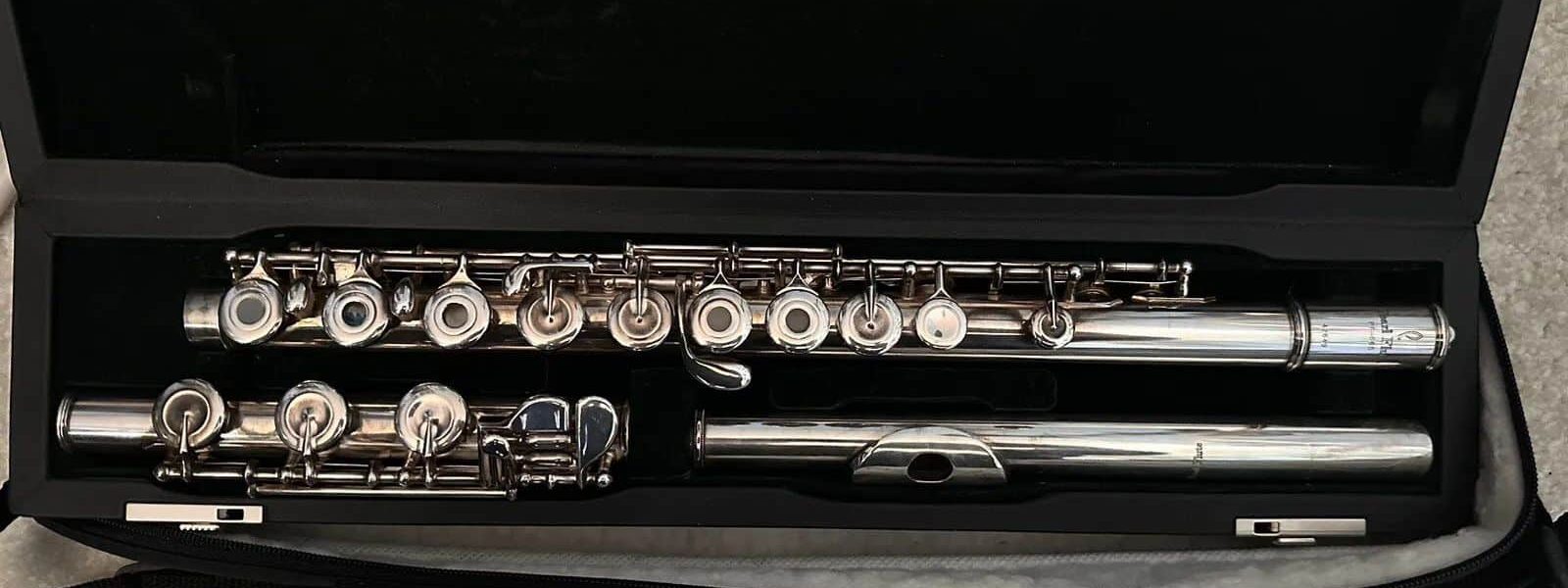
The PEARL 505E Quantz Flute features a silver-plated body and headjoint, offering a warm, resonant tone and excellent durability.
Its unique pinless mechanism and split E mechanism enhance playability and reliability, making it an ideal choice for advancing flutists.
Pearl 505E Quantz Flute
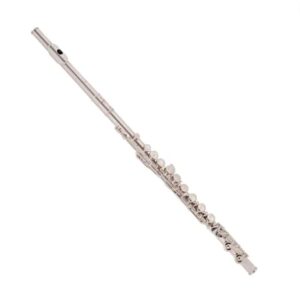
FEATURES:*With French-pointed arms, which provide a better seal with improved durability
*Enhances stability when combined with the one-piece core-bar
Pearl 505E Quantz Flute
- Loaded with features of professional flutes
- Comes with a faux leather-bound wooden case, case cover, cleaning rod and cloth
- Higher price range
- Not suited for advanced and professional players
When you click ‘Check Price’, you’ll see there are loads of great places to buy this item. Our personal favorite is Sweetwater for the US, and Thomann and Gear4Music for the UK & Europe.
They are the largest music retailers, with excellent customer service, competitive prices, really fast shipping, and the longest guarantees.
The professional musician who wrote this article combined many things,
from the product build, manufacturer’s reputation through to feedback
from other users, to create our famous TedScore™.
ARMSTRONG FL650 BEGINNER FLUTE
The ARMSTRONG FL650 Beginner Flute features a silver-plated body and headjoint, providing a bright, clear tone and robust durability.
Its ergonomic key design and reliable intonation make it an excellent choice for new flutists looking for an easy-to-play and dependable instrument.
Armstrong FL650 Beginner Flute
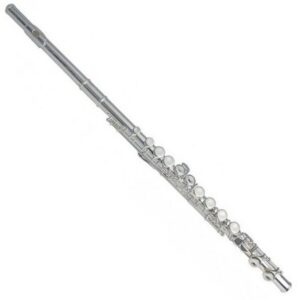
FEATURES:*Has a nickel and silver alloy body with a stable and robust build
*With white felt bumpers have a comfortable feel and easy playability
*Includes Pisoni pads that provide reliable pressure
Armstrong FL650 Beginner Flute
- Comes as a pack including a wooden case with a cover, cleaning rod and a cleaning cloth
- Set to standard C tuning ideal for developing playing skills
- No curved head
When you click ‘Check Price’, you’ll see there are loads of great places to buy this item. Our personal favorite is Sweetwater for the US, and Thomann and Gear4Music for the UK & Europe.
They are the largest music retailers, with excellent customer service, competitive prices, really fast shipping, and the longest guarantees.
The professional musician who wrote this article combined many things,
from the product build, manufacturer’s reputation through to feedback
from other users, to create our famous TedScore™.
How to stop flute keys from sticking:
Summary
Maintaining my flute to avoid sticky keys has been quite the adventure. It starts with keeping my instrument clean, which is the golden rule.
I always make sure to swab out the flute pad and tone hole after each session. It’s a good habit that’s saved me a lot of grief.
Sometimes, a quick fix with pad-cleaning paper does the trick. I slip it under the key and gently press it, and the stickiness usually bids farewell. It’s my go-to before I consider trudging down to the repair shop.
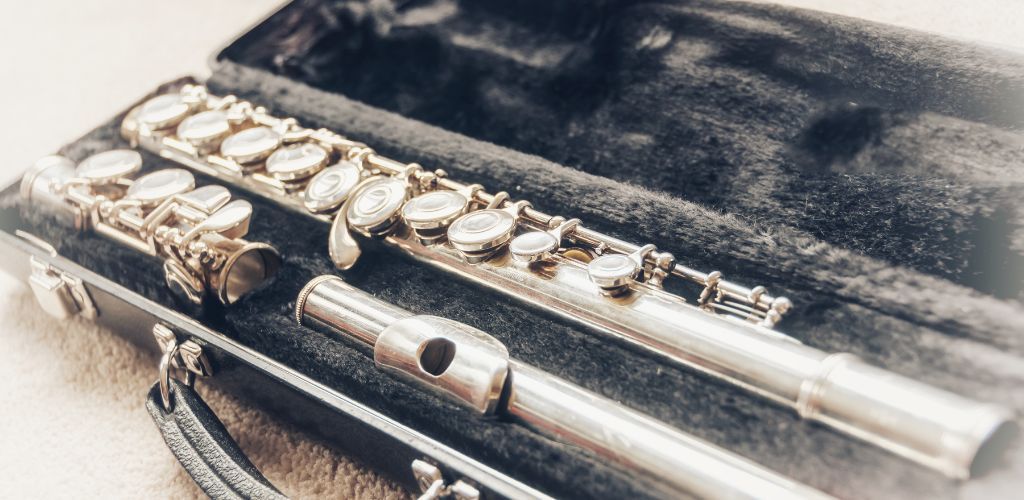
Regularly checking the condition of the pads is a smart move. If I spot them looking a tad worse for wear, I know it’s time to replace them before they start causing trouble.
Storing the instrument in a dry case ensures it’s safe and snug until our next musical session. Sticky keys can disrupt my favorite tunes, but with gentle care, my flute can play properly!
Just a moment, there’s more…
Discover the best flute brands in the market and make an informed decision on your next flute purchase.
FAQ's
To prevent flute keys from sticking, keep the instrument clean by swabbing it after each use and using flute pads cleaning paper as a quick fix when needed. Regularly checking the condition of the pads and storing the flute in a dry case can also help avoid sticky keys.
Sticky keys on a flute can often be alleviated by carefully cleaning the affected areas with a soft cloth and a small amount of key oil to ensure smooth and reliable key action.
A sticky key on a flute can be caused by a buildup of moisture, dirt, or debris in the key mechanism and the accumulation of old lubricants, which can hinder smooth key action.
A flute key may not come back up for various reasons, such as a misaligned mechanism, a bent key, or a buildup of debris or residue in the key’s hinge. Seeking a professional repair technician for any persistent sticking key can help prevent potential damage and ensure that the flute functions smoothly.










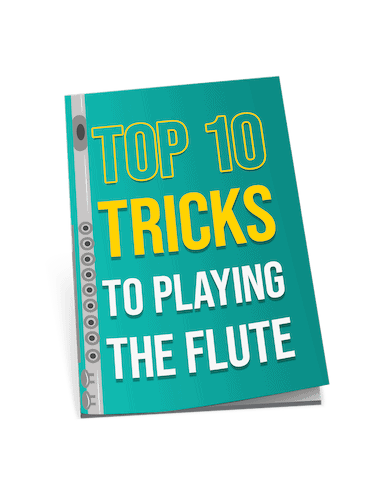
Wondering if the cleaning and care techniques mentioned are kid-friendly? My daughter just started playing, and I want to make sure she can help take care of her flute without us worrying too much.
Loved the piece on the recommended brands like YAMAHA and PEARL! It’s super helpful for folks like me trying to upgrade their flute without breaking the bank. Quality instruments make such a difference in sound and playability. It’s cool seeing the ARMSTRONG FL650 mentioned for beginners too; wish I had that guide when I was starting out!
Intrigued by the section discussing ‘The Role of Pads and Keys in Flute Functionality.’ It’s often overlooked how pivotal proper maintenance is, not just for the longevity of the instrument, but also for ensuring optimal performance. Many assume their playing is at fault, not considering that the instrument itself could be hindering their progress. This article underscores the importance of understanding every facet of your instrument.
Hey, Chloë Vincent, quick q about the ‘Temporary Fixes on the Go’ part. Does it mean I can do some magic and unstick my flute keys right before a performance? Or is it more like a ‘don’t try this five minutes before you go on’ kinda thing? Just curious cuz my flute always decides to act up at the worst times.
lol felt this, my sax does the same. we gotta figure this out before state finals haha